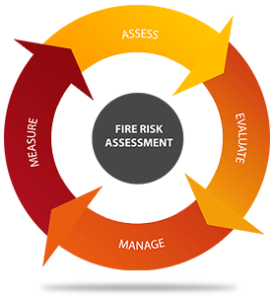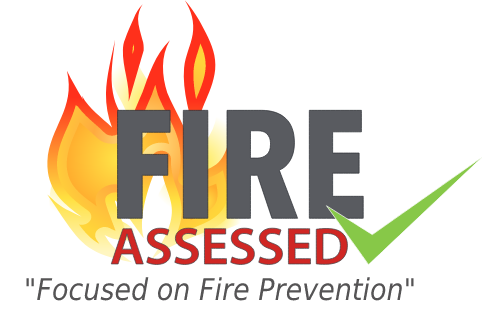Risk Assessments
Fire risk assessments
 As the responsible person you must carry out and regularly review a fire risk assessment of the premises. This will identify what you need to do to prevent fire and keep people safe.
As the responsible person you must carry out and regularly review a fire risk assessment of the premises. This will identify what you need to do to prevent fire and keep people safe.
You must keep a written record of your fire risk assessment if your business has 5 or more people.
When these Regulations came into force there is now a requirement for all employers to:
• Carry out a fire risk assessment of the workplace taking into consideration all employees and all other people who may be affected by a fire in the workplace, and to make adequate provision for any disabled people with special needs who use or may be present in the premises;
• Identify the significant findings of the risk assessment and the details of anyone who might be especially at risk in case of fire. If more than five people are employed or the premises are licensed it is a requirement that these significant findings are recorded; (However, the best evidence of compliance as well as best practice that a written record is produced on all occasions to assist with the process of ongoing reviews)
• Provide and maintain such fire precautions as are necessary to safeguard those who use the workplace; and
• Provide information, instruction, and training to employees about the fire precautions in the workplace
By ‘responsible person’, the RRFSO means anyone who has any degree of control over the premises, which can include, inter alia, the employer, owner, occupier, or managing agent.
The 4 Types Of Risk Assessment
Type 1
Type 2
Type 3
Type 4
As with the Type 3 assessment, access to flats can be difficult and the destructive nature of the assessment will involve a contractor to open up and repair damage after the inspection.
Are Type 2 or 4 Fire Risk Assessments Needed?
A risk assessment is a process of identifying hazards, evaluating risks, and controlling or eliminating those hazards during daily tasks and activities.
This also involves applying control measures to make sure your people and any visitors to your site are safe. Ultimately, you have to decide what might cause harm to people and take reasonable steps to prevent that harm.
If you employ over five people, you must keep a written record of all of your assessments. If you don’t? You could face a fine or even prosecution.
We should all be aware that Fire Risk Assessments are legally required but did you know that there are different types of risk assessment that can be carried in blocks of flats?
The current guidance endorsed by the National Fire Chiefs Council (NFCC) ‘Fire Safety in Purpose Built Blocks of Flats’, issued by the Local Government Association in 2012, identifies 4 types of Fire Risk Assessments; some of which are destructive.
The Regulatory Reform (Fire Safety) Order 2005 (RRO) states that a Fire Risk Assessment (FRA) is required in almost all buildings, however, does not go into specific detail about how intrusive or destructive this should be.
